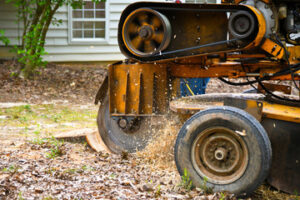A window crack, whether caused by temperature stress or impact damage, is a serious structural problem that compromises the security and energy efficiency of your home. Fortunately, a quick window repair can save you money and prevent the spread of cracks throughout your home.
Start with a plywood insert. Paint the insert to match your home’s exterior and then fasten it securely to your frame. Contact Window Repair Naperville now

Wooden window frames require special care to protect the integrity of the timber. Without this, the wood can start to rot and deteriorate. This can create a host of problems, including allowing water into the home and the development of mould. Fortunately, the rot can often be repaired. However, depending on the severity of the rot, it may be necessary to remove the glass panes from the frame and replace the rotten timber. This can be a difficult job, especially for people not comfortable working with power tools. In these cases, it is best to call in a professional.
The first step to repairing a rotted window frame is to clear away any nails, additional wood or debris from the area. This will help the repair process run smoothly and prevent further damage to the window sill. Once the damaged area has been cleared, it is essential to seal the remaining wood with an exterior wood filler. This will help to prevent further moisture damage and to keep your home protected from insects.
After preparing the area, mix your chosen wood filler with the putty knife and apply it to the affected area. Make sure to follow the manufacturer’s instructions and to ensure that it is fully mixed. Once the wood filler has been applied, sand it down until it is smooth and then paint or stain it.
Alternatively, you can use a splice repair technique to replace the damaged timber and restore the integrity of the window. This is a more involved repair process and requires a number of different hand tools such as a chisel, hammer and a saw. This can be a very time-consuming and frustrating job, especially for those who are not confident with using power tools.
It is also important to regularly clean and lubricate sliding window tracks. This will help to prevent the accumulation of dirt, debris and spider webs and keep your window functioning properly. Finally, if your windows are prone to condensation, it is recommended that you have them treated with a product designed to reduce humidity.
Seals
A window’s seal is what locks in the gas used for insulation, allowing the window to keep heat or air inside the home while keeping outside elements like moisture and drafts out. While it may seem like a minor issue, broken window seals can lead to higher energy bills as the windows lose their insulating value. It’s important to address any window seal failures as soon as possible to save money and prevent further damage to the frame and glass of your window.
The easiest way to determine whether your window seals have failed is to simply look around the perimeter of the windows and frame. Check to see if light is coming in at the points where the window meets the wall or the sash meets the frame. This indicates that there is a gap in the window, which can allow water and air to pass through, leading to condensation and window fog. If you notice a draught or fogging in your windows, it is time to call for window repair to address the seals.
Window seals can be damaged by a variety of factors, including extreme temperature changes and harsh weather conditions. Temperature changes cause the window seal to expand and contract, which can weaken and break the seal. Additionally, harsh weather conditions, such as high humidity or salt air, can cause the seal to deteriorate faster than normal.
Other causes of window seal failure include water damage, pests, and poor installation. These issues can all cause the window seal to break, causing gaps and openings that let in air, water, and pests. Finally, the constant opening and closing of windows can put stress on the window seal, causing it to break down over time.
To fix a broken window seal, first thoroughly clean the frame and wipe away any dirt, debris, or old sealant residue using soap and water. Use a putty knife to remove any cracks or areas of broken sealant. Then, apply a bead of silicone-based sealant to the area where the seal is broken. Be sure to cover any gaps or cracks as well.
Glass
A pebble from your lawnmower, a baseball thrown by a child, or a heavy window treatment falling over can crack glass. Depending on the size and type of the crack, a professional can either repair it or replace the glass. A broken window can compromise the appearance and energy efficiency of a home, so it’s important to repair them as soon as possible.
If the crack is minor, one of several do-it-yourself repair methods may be appropriate. If the crack runs in several directions or is so deep that it would be difficult to press your palm against, however, you are likely beyond a do-it-yourself fix and should contact a professional.
When repairing glass, it is essential to use the correct materials. A high-quality, two-part epoxy is the most effective choice for small repairs. It consists of a resin and a hardener that are combined during application, often using a double-cylinder syringe to regulate the flow. This syringe will also help you to control the amount of epoxy that is applied, making it easy to get a clean, accurate result.
You can find this type of epoxy at most hardware and home improvement stores. When using it, follow the manufacturer’s instructions carefully. In most cases, you’ll need to mix a 50/50 mixture of resin and hardener, and apply it immediately to the glass before it thickens.
Once the epoxy has cured, you can cut off any excess with a razor blade or utility knife. Then, if you like, you can coat the exposed edges of the glass with a clear polyurethane sealant to protect the crack from future damage and to add a bit of extra durability.
To keep your windows looking their best, regularly wash them with a gentle cleaning solution. Be sure to rinse the glass completely and then dry it with a lint-free cloth or paper towel. If your glass has hard-to-reach corners or narrow spaces, a cotton swab or soft toothbrush dipped in the cleaning solution can be used to remove stubborn dirt and grime. After each cleaning, be sure to wipe the surface with a dry cloth to prevent streaks.
Paint
Over time, exposure to the elements and normal wear and tear can cause gaps around windows. This isn’t just unsightly; it allows cold air to flow in and hot air to escape, driving up energy costs and damaging the seals. It’s important to address these issues, especially when they’re small, to prevent damage that will require more extensive and costly repairs.
When repairing a window, it’s vital to paint the area being repaired before starting work. The most common area to be painted is the sill or trim, but there are many other areas that need attention as well. For example, if your house was built before 1978, there is a chance that the wood casing might contain lead, which requires special care when painting. A good quality primer should be used, and the bare wood should be sanded smooth before applying a new coat of paint. To avoid a harsh transition from bare wood to paint, use 220-grit sandpaper or a sanding sponge. Once the sanding is complete, it’s important to wipe down the entire area with a clean rag or shop vacuum to remove dust and debris.
Another problem that may be encountered with older wooden window frames is that the sashes are difficult to raise and lower. This may be due to sash weights being broken or sash springs having failed. The solution for this issue is a simple fix: replace the sash weights and springs. This is a quick repair that most do-it-yourselfers can handle.
The last part of the window frame that needs to be addressed is the paint around the glass. It’s important that this paint extends to the glass on both sides, as it helps to keep moisture from leaking behind the frame and rotting the wood. To maintain this seal, the glazing compound should be sanded smooth, and the paint should be touched up as needed.
Using the right tools and techniques will help ensure that your windows are in great condition for years to come. Keeping up with these maintenance tasks will help to improve the security, ventilation, and aesthetic appeal of your windows. For any additional questions or concerns, it’s recommended to contact a professional to learn more about the specific issues that you may have with your windows and how they can be fixed.


